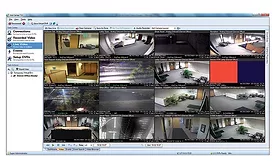Home » Keywords: » NVR
Items Tagged with 'NVR'
ARTICLES
Optimizes Video Value for SMB Installations
Arteco-3000 Network Video Recorder
February 1, 2017
Provides Simple, Cost-Effective Viewing and Recording of HD Video
From Vicon Industries Inc.
May 1, 2014
Choosing the Right Video Recording Technology for Your Enterprise
Ignore the acronyms -- Use these five areas of comparison to shop smarter for video recording tools.
November 5, 2013
How Video Recorders Provide Critical Support to the Enterprise
While cameras are becoming a critical enabler of operational excellence, reliable video storage is the absolute necessity to ensure that the tool is there when you need it.
November 5, 2013
Sign-up to receive top management & result-driven techniques in the industry.
Join over 20,000+ industry leaders who receive our premium content.
SIGN UP TODAY!Copyright ©2025. All Rights Reserved BNP Media.
Design, CMS, Hosting & Web Development :: ePublishing


